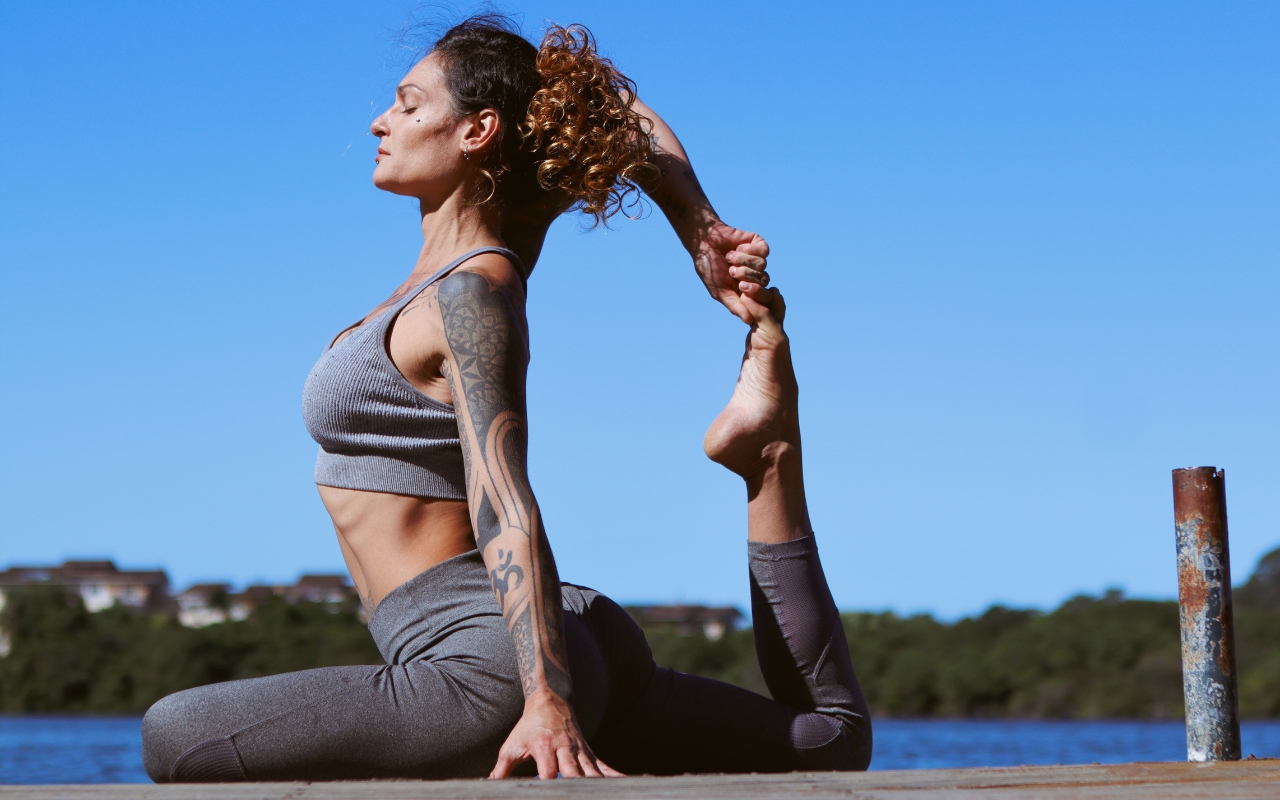Fitness
What are the best exercises for improving posture?
Published
2 years agoon
By
mbkteam
In today's digital age, many of us find ourselves tethered to our desks for long hours, leading to poor posture and many associated health problems. Whether it's the nagging back pain that starts mid-afternoon or the stiffness in your neck and shoulders, these discomforts are often a direct result of prolonged sitting and incorrect posture. Luckily, there are various exercises and strategies to improve your posture and alleviate these issues.
Improving your posture isn't just about standing up straight; it’s about making fundamental changes to your everyday habits and engaging in exercises that strengthen and stretch key muscles. Incorporating these activities into your daily routine can significantly enhance your posture and overall well-being.
Understanding the Importance of Good Posture
Good posture is crucial for maintaining a healthy and pain-free body. When our posture is poor, we place unnecessary strain on our muscles and ligaments, leading to chronic pain and injuries over time. Moreover, poor posture can affect your balance, making you more susceptible to falls and other accidents. Standing and sitting correctly also ensures that our organs are appropriately positioned, which can improve breathing and digestion.
Research has shown that maintaining good posture can boost confidence and overall mood. Think about it: standing tall with your shoulders back naturally makes you feel more confident and assertive. On the contrary, slouching can make you appear lazy and disinterested.
Posture Exercises You Need to Know
Let’s dive into some practical exercises to help correct poor posture and strengthen the muscles required to maintain a healthy stance. Here are a few recommendations based on expert advice from physical therapists and fitness professionals.
Child's Pose
This famous yoga pose is excellent for stretching and lengthening your spine, glutes, and hamstrings while releasing lower back and neck tension.
How to Do It:
- Sit on your shins with your knees together, your big toes touching, and your heels splayed to the side.
- Fold forward at your hips and walk your hands out before you.
- Sink your hips back down toward your feet. If your thighs won’t go down, place a pillow or folded blanket under them for support.
- Place your forehead on the floor or turn your head to one side.
- Keep your arms extended or rest them along your body.
- Breathe deeply into the back of your rib cage and waist.
- Relax in this pose for up to 5 minutes while breathing deeply.
Cat-Cow Stretch
This versatile exercise, often used in yoga and physiotherapy, helps relieve tension in the torso, shoulders, and neck while promoting blood circulation and spinal mobility.
How to Do It:
- Start on all fours with your wrists aligned under your shoulders and your knees under your hips.
- Inhale as you look up, letting your stomach drop toward the floor (Cow position).
- Exhale as you arch your spine toward the ceiling and tuck your chin into your chest (Cat position).
- Repeat this cycle for at least 1 minute.
Hip Flexor Stretch
Sitting for long periods can lead to tight hip flexors and lower back pain. This simple stretch can help alleviate that tension.
How to Do It:
- Begin in a high kneeling position, with one leg forward and the other knee on the ground.
- Clench your buttock muscles to bring your hips forward.
- Keep your back straight, and lean forward until you feel a stretch down the front of your leg.
- Hold for 20 seconds and repeat on each side twice.
Door Frame Stretch
The door frame stretch helps open the chest and counteracts the forward hunched position, ideal for those who spend long hours at a desk.
How to Do It:
- Stand in a doorway with your arms forming a 90-degree angle against the door frame.
- Step forward with one foot and gently press your chest through the doorway.
- Hold for 20-30 seconds and repeat 2-3 times.
Mini Cobra
This floor exercise strengthens the upper back and improves spinal alignment, relieving the strain of poor posture.
How to Do It:
- Lie on your stomach with your hands flat on the ground under your shoulders.
- Pull your navel towards your spine and squeeze your inner thighs together.
- Rest your forehead on the ground.
- Press down through your palms to lift your shoulders and chest off the ground, keeping your elbows bent.
- Slowly lower back down and repeat 10 times.
Arm Roll Stretch
This stretch targets tight areas in the front of the chest and armpits, which can become tense from prolonged sitting.
How to Do It:
- Lie on your stomach and reach your right arm in line with your shoulder.
- Place your left hand under your left shoulder and gently roll your body toward the right arm.
- Hold 30 seconds or 5 deep breaths, then repeat on the opposite side.
Thoracic Spine Rotation
This exercise gently opens the chest and rotates the spine, increasing stability and mobility.
How to Do It:
- Start on all fours and sink your hips back to your heels.
- Place your right hand behind your head with your elbow extended to the side.
- Keep your left hand under your shoulder or on the ground for support.
- Exhale as you rotate your right elbow up toward the ceiling.
- Repeat 5-10 times, then switch sides.
Glute Bridge
A glute bridge strengthens your core and glutes, helping to support proper alignment and posture.
How to Do It:
- Lie on your back with your knees bent and feet flat on the floor.
- Lift your hips towards the ceiling, squeezing your glutes at the top.
- Hold for a few seconds and lower back down.
- Repeat 10-15 times.
Making Postural Awareness a Daily Habit
In addition to these exercises, maintaining good posture daily requires mindful habits. Here are some tips to integrate into your daily routine:
Posture Checks
Make it a habit to check your posture throughout the day. A straightforward way to do this is by standing against a wall. Ensure less than two inches of space between the wall and your neck and lower back. This exercise can help remind you of proper alignment.
Ergonomic Workstations
Setting up an ergonomic workstation can significantly improve your posture. Your monitor should be at eye level, and your chair should support your lower back. Keep your feet flat on the floor and use a footrest if necessary.
Taking Breaks
Take short breaks every 30 minutes to avoid sitting for extended periods. Stand up, stretch, or quickly walk to relieve muscle tension and prevent stiffness.
Mindfulness and Body Awareness
Paying attention to how you sit, stand, and move throughout the day can prevent poor posture. Practice mindfulness by regularly observing and correcting your posture.
Proper Footwear
Wearing supportive shoes can help maintain proper alignment. Avoid high heels and opt for shoes with good arch support.
Sleep Position
Your sleeping position also affects your posture. Use a pillow that supports the natural curve of your neck, and avoid sleeping on your stomach, which can strain your neck and back.
The Road to Better Posture
Improving your posture is a gradual process that involves physical exercise, mindful habits, and, sometimes, the help of professionals. Physiotherapy can provide tailored exercises and stretches to address posture-related issues (Momentum Physical Therapy). Regular practice of the recommended exercises can significantly improve posture, reducing pain and enhancing overall health.
In conclusion, maintaining good posture is essential for a healthy and pain-free life. Incorporating these exercises and habits into your daily routine can correct poor posture, alleviate discomfort, and improve your overall well-being. Remember that consistency is key, and you can achieve and maintain perfect posture with dedication. For additional resources and expert advice, consider visiting Healthline and NBC News.













